The NZXT S340 Case Review
by E. Fylladitakis on July 13, 2015 8:00 AM EST- Posted in
- Cases/Cooling/PSUs
- NZXT
- Case
- ODD-Free
The Interior of the NZXT S340
With the side panels removed, we can admire the smooth matte black interior of the S340. The glossy white paint that covers the case’s exterior is sprayed only on the rear frame and the metallic cable cover.
The first thing of particular note about the S340 is the metallic cover that separates the PSU compartment and the rest of the system. Unlike the vast majority of designs, it is part of the frame and cannot be removed. This enhances the mechanical strength of the case but it somewhat limits its flexibility and ease of use. An asymmetric opening on the motherboard tray allows for the installation of advanced cooling solutions with the motherboard still inside the case.
Instead of opening several holes and covering them with grommets, NZXT cut open the entire right side of the motherboard tray and is using a single removable metallic cover for it. The downside is that the removable cover has all the cable ties on it and therefore it is very likely that they will have to be cut each time the cover needs to be removed. It also is somewhat flimsy and bends very easily, even with minimal stress, requiring from the user to bend it back in shape in order for the mounting holes to align when reinstalled.
Two 2.5” device trays are mounted at the bottom of the system compartment, on top of the black metal frame that separates the PSU compartment from the rest of the case. There are openings for the cables right in front of them, as well as another smaller opening to their right. Each tray is secured with a single thumbscrew. Large expansion cards installed at the lower slots of the motherboard will block access to these two trays, forcing the user to remove the card in order to access them. However, the S340 is not really the case of choice for tri-SLI systems, so it is highly unlikely that actual users will face this problem.
Only three 3.5” drives can fit in the S340. Two of them can be installed in the small cage at the front of the PSU compartment, near the bottom of the case. This cage is not removable. The third one can fit under this compartment, bolted directly to the bottom frame of the case. The removal of the faceplate is necessary in order to secure the drives in the cage, as the screws are inserted from the front of the case. For the third drive, the user has to flip the case to its side, as the holes are at the bottom of the case.
There is no active cooling directly aimed at the 3.5" drives, which rely on the semi-passive airflow of air that will enter from the front of the case through the vents at the top of the drive's cage and out of the case via the exhaust fans. This setup depends on negative pressure airflow and can cause performance issues if a radiator or two intake fans are installed at the front of the case. With this design, the exhaust flow needs to be significantly stronger than the intake flow, otherwise the passive air intake through the vents will be far too low to offer the 3.5" devices reasonable cooling.
There are two stock fans installed in the S340, one 120 mm fan at the rear and another identical fan at the top of the case. Although either of these could be removed to give their place to liquid cooling radiators, there is little clearance between them and the motherboard, which will undoubtedly lead to compatibility issues (we have read that users cannot fit a H105 for that reason). That however will not be necessary as two intake fans or up to a 240/280 mm liquid cooling radiator can be installed at the front of the case, where plenty of room is provided. It remains strange why NZXT installed a 120 mm fan at the top of the S340, where a 140 mm can fit.
As we noticed in the previous page, the PSU compartment is located at the lower rear side of the case, where a cover is held in place with four thumbscrews. Removing the cover and inserting the PSU from the rear of the case is the only way possible to install it in the S340, as it will not fit from the side. Once inserted, the PSU sits directly on metal impressions of the bottom chassis panel. Theoretically, a PSU of any length can fit inside the S340 but we strongly recommend not to install a unit longer than 180 mm, otherwise cable management could become very difficult.
For the means of this review, we installed a Corsair AX760i with the red cable set, for strong visual contrast. It fits without issues inside the NZXT S340 and the cables are long enough for a standard system. Individually sleeved cables however are stiff and are not ideal for the design of the S340 as the metallic cable management cover requires the cables to take sharp turns. Due to the narrow spaces and sharp turns, stiff cables place excessive stress on the connectors and are difficult to manage.
The system area of the NZXT S340 is large enough for a standard ATX system to fit comfortably. Aside from the large opening at the right of the motherboard tray, several other small openings help with the routing of cables between the compartments through the right side of the case. Without fans or a liquid cooling radiator, cards up to 35 cm can easily fit inside the S340. It is possible to calculate how much clearance is left for the cards after fans or a radiator is installed though. The total clearance to the front of the case is 36.4 cm, therefore the thickness of a radiator or the fans can be simply subtracted from this length. For example, if a 3 cm thick radiator with 2.5 cm thick fans is installed, that reduces the available clearance down to 36.4 - 3 - 2.5 = 30.9 cm.
The cards are held in place using thumbscrews, inserted from the rear of the case. Usually, designs that employ the securing of cards from the rear of the case also have covers to shield the opening and the screws. This is not the case with the S340, where a fairly large permanent opening is present next to the expansion slots and the thumbscrews are always accessible from the outside of the case.


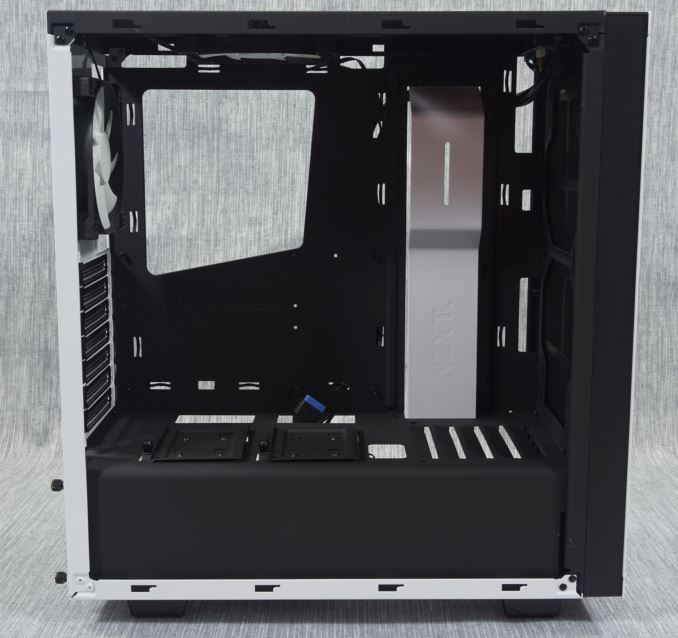
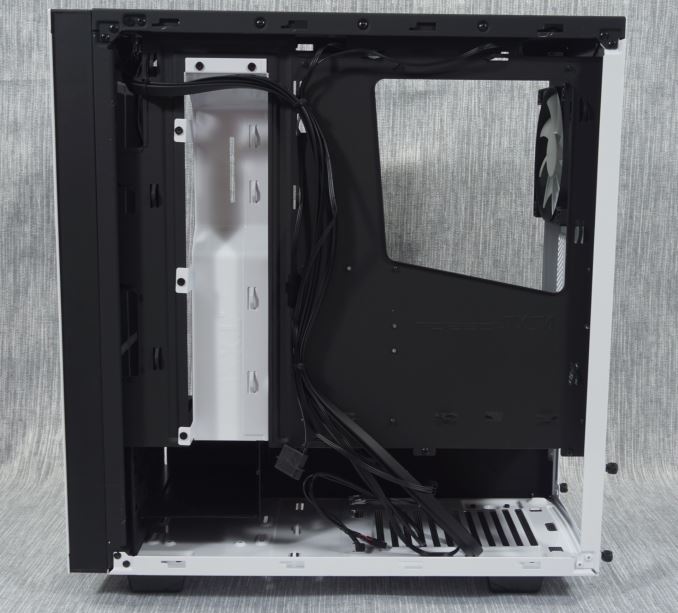
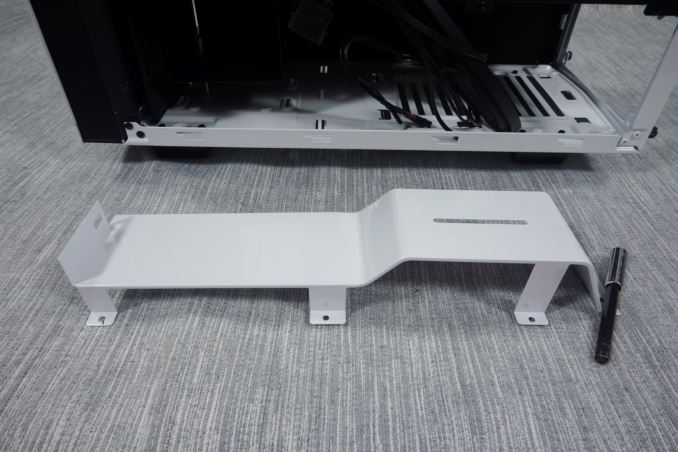
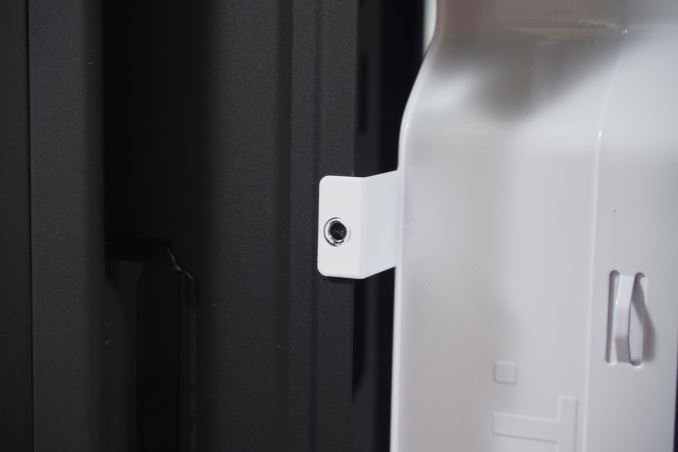
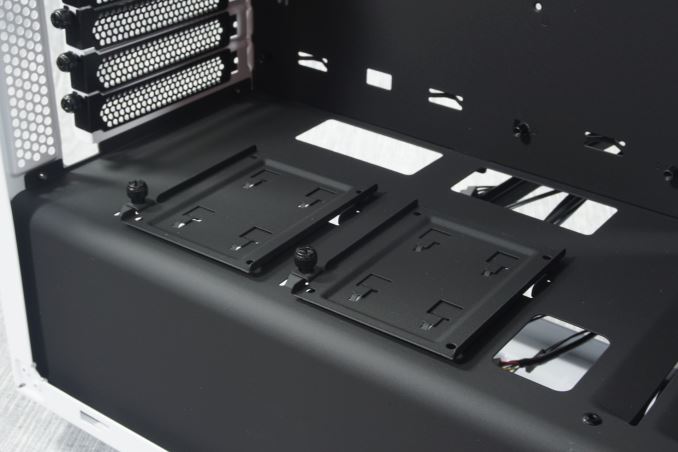

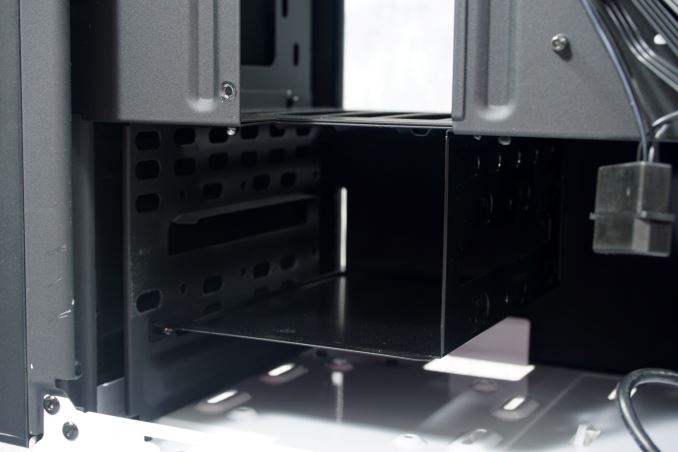
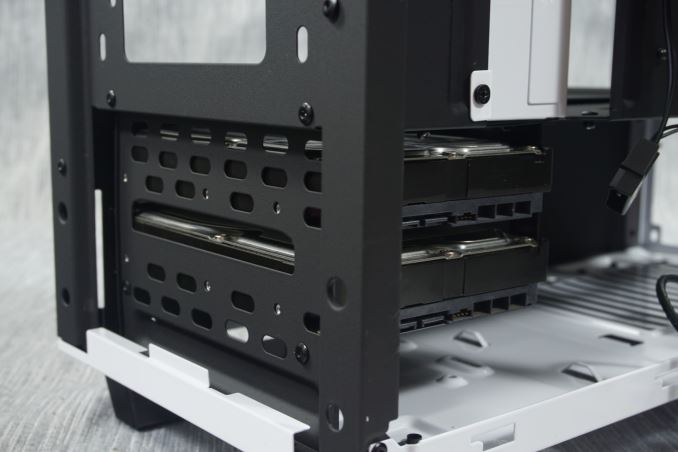
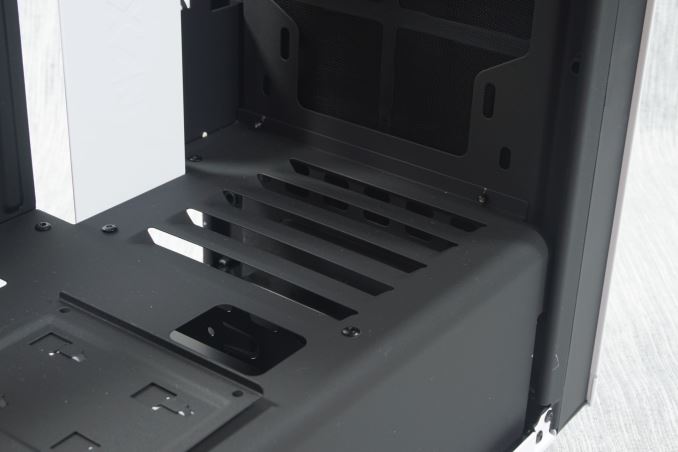
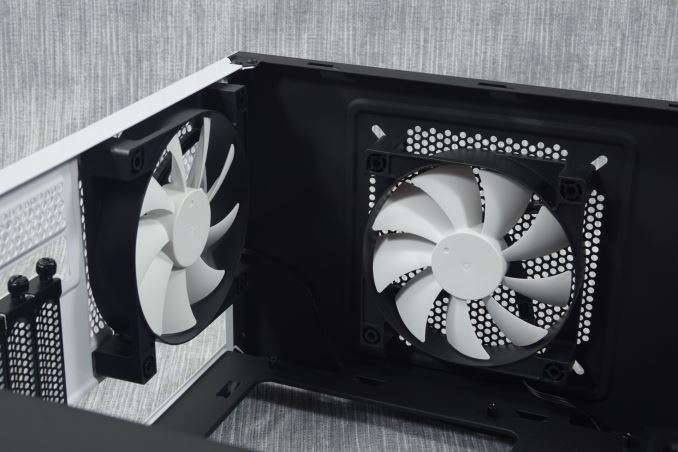
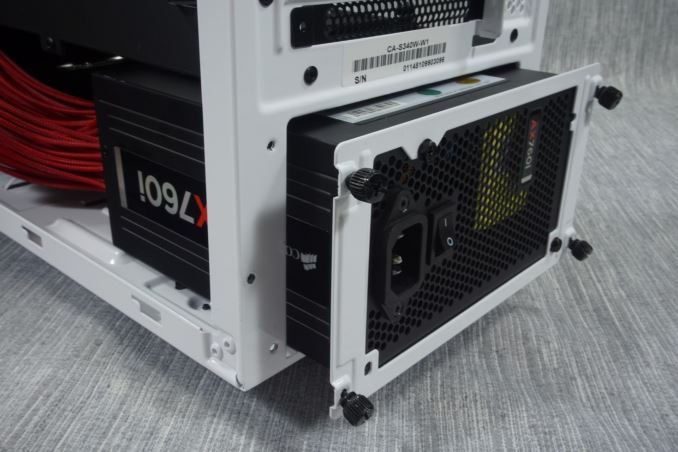










48 Comments
View All Comments
Qrash - Monday, July 13, 2015 - link
I feel it would be preferrable to use liters instead of cubic meters when listing the volume of a case. For the NZXT S3430 the volume is 38.4 liters which I prefer to 0.0384 cubic meters. For small mini-ITX cases, the volume is often listed in liters.Wardrop - Monday, July 13, 2015 - link
I agree. Litres seems to be more standard in the industry.ES_Revenge - Monday, July 13, 2015 - link
Fitting the monster GPUs of today is one reason... At least AMD is trying to end that trend with the super-short Fury cards. But yeah other than that GPU length has gotten out of hand IMO.powerwiz - Tuesday, July 14, 2015 - link
You would be correct on that. My MSI 980 GTX is about as long as they get in terms of length. I would of been screwed getting it into a smaller case other then the one I recently chose.I think the main reason for them being longer all of a sudden is to spread out the electronics for heat dissipation.
Shadow7037932 - Monday, July 13, 2015 - link
Good to see more cases ditching the 5.25" drive bays. I haven't put one of these drives in a system since 2005. USB DVD RW works well enough in the rare case I need to use it. Even for OS installs, I just use flash drive since it's faster.With that being said, I do wish they made an add-on item for extra 2.5"/3.5" bays to go where the 5.25" drives would have been. Something similar to the removable drive bays we've seen in other cases.
Sushisamurai - Monday, July 13, 2015 - link
So, i'm assuming HSF (first page, by GPU clearance) is in reference to a CPU cooler? It certainly looks like a nice, minimalistic case - cable routing to the bottom right corner of a motherboard would look fairly difficult as I don't think the cables were meant to be run in front of the cable holding panel thing. I wonder though, how much clearance is there from the top fan to the motherboard, as some motherboard heat sinks are really thick and the provided example build picture doesn't really illustrate if that may be a problem.Good catch on the negative pressure airflow problem for cooling the HDD's. Good review/read; if I could make a suggestion, I think you should have also added the Bitfenix prodigy as a temperature/price comparison. Crank out more case reviews!
Samus - Monday, July 13, 2015 - link
It actually is a really nice looking case. I'm glad to see more minimalistic, less gaudy designs. Some of these cases over the years have been ridiculous. Even the likes of Silverstone aren't immune to aesthetic screw-ups (the Raven's, in my opinion, are ridiculous looking, especially when they are internally similar to the fantastic looking Fortress's)jabber - Monday, July 13, 2015 - link
Would look even better with no windows.mr_tawan - Monday, July 13, 2015 - link
At first I thought this is ... "odd-free" design, and wondered what is that 'odd' means ? everything comes in even number ? Then I realized later that it actually is "ODD-free" (as Optical Disc Drive). Take me a few hours to realize lol.BrokenCrayons - Monday, July 13, 2015 - link
I like the overall style of the case, but I personally find it a little bit large though I understand there are some space compromises that have to be made to handle ATX specifications. What I think is a bigger problem is the lack of USB ports. With there being no optical drive, I think an increase in front or top accessible USB ports becomes more important for things like memory card readers, flash drives, or occasional USB ROM drives since file exchanges don't always happen over a network connection.